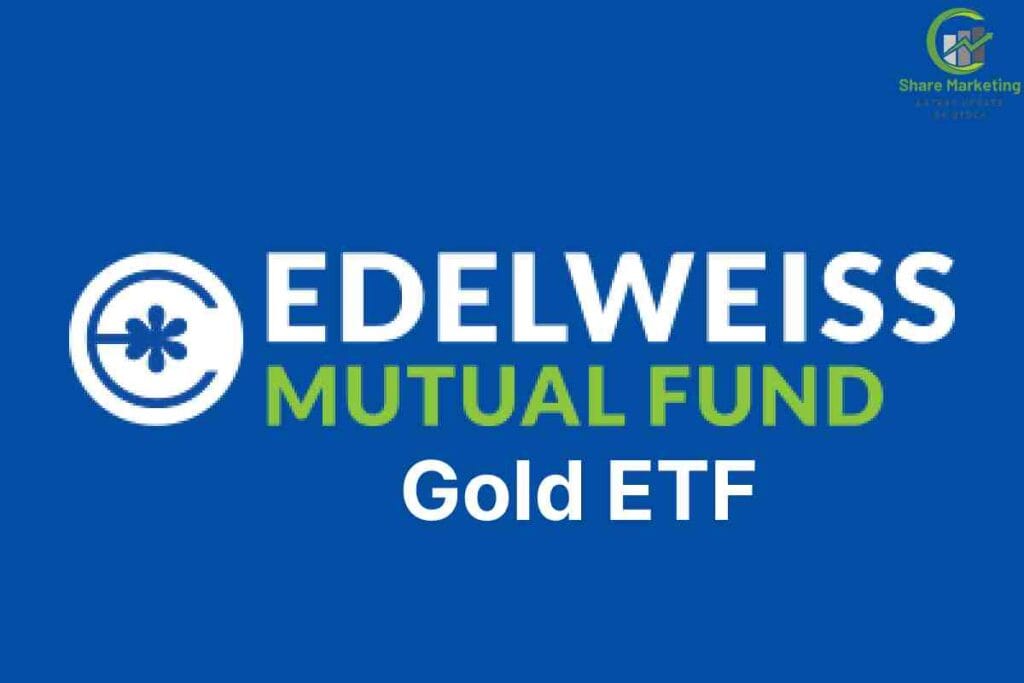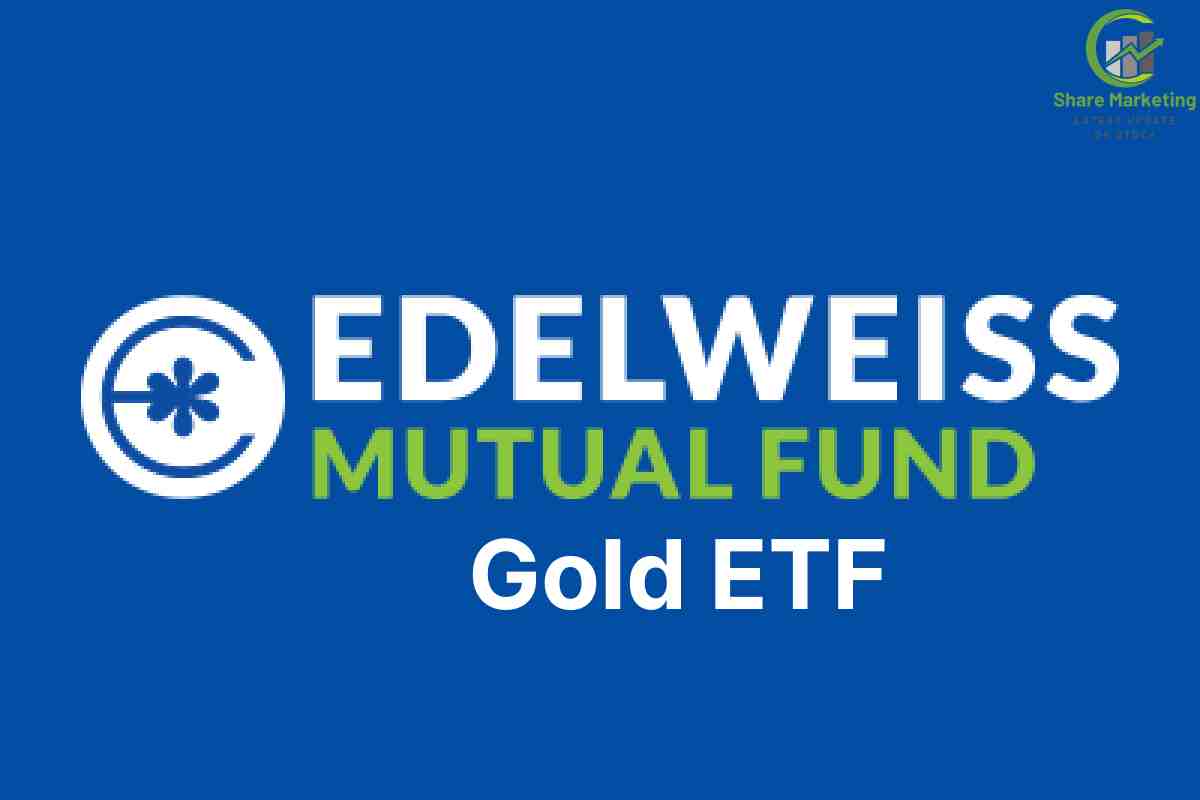Edelweiss Gold ETF is an open-ended exchange-traded fund introduced by Edelweiss Mutual Fund on November 7, 2023. The primary objective of this scheme is to generate returns that align with the performance of physical gold in domestic markets, subject to tracking errors.
Key Details:
- Fund Inception Date: November 7, 2023
- Net Asset Value (NAV): As of September 13, 2024, the NAV stands at ₹74.37.
- Assets Under Management (AUM): Approximately ₹59 crore as of September 17, 2024.
- Expense Ratio: 0.35%
- Benchmark: Domestic Gold Price
- Fund Manager: Amit Vora, managing the fund since July 1, 2024.
Performance:
Since its inception, Edelweiss Gold ETF has delivered a return of approximately 20.25%.
Investment Details:
- Minimum Lumpsum Investment: ₹5,000
- Minimum SIP Investment: ₹1,000
- Exit Load: Not applicable
Tax Implications:
- Short-Term Capital Gains (STCG): If units are redeemed within 3 years of investment, gains are added to the investor’s income and taxed as per applicable slab rates.
- Long-Term Capital Gains (LTCG): For units redeemed after 3 years, gains are taxed at 20% with indexation benefits.
- Dividend Distribution Tax: Dividend income is added to the investor’s income and taxed according to respective tax slabs. For dividend income exceeding ₹5,000 in a financial year, a TDS of 10% is deducted.
Risk Profile:
Investments in Edelweiss Gold ETF fall under the ‘High’ risk category, as per SEBI’s guidelines.
Fund Holdings:
The fund primarily invests in physical gold, constituting approximately 97.20% of its portfolio, with the remaining in cash and cash equivalents.
Conclusion:
Edelweiss Gold ETF offers investors an opportunity to invest in gold through a convenient and cost-effective ETF structure. It aims to mirror the performance of physical gold in domestic markets, making it suitable for those looking to diversify their portfolio with exposure to precious metals.
What is Edelweiss Gold ETF?
The Edelweiss Gold ETF is an open-ended exchange-traded fund (ETF) that aims to provide investors with returns closely mirroring the performance of physical gold in the domestic market. It achieves this by primarily investing in gold bullion of 99.5% purity or higher.
Key Features:
- Objective: To generate returns that track domestic gold prices, subject to tracking error.
- Structure: Open-ended, meaning investors can buy and sell units of the ETF on stock exchanges during market hours.
- Liquidity: Units can be traded on the exchange like a stock, offering high liquidity.
- Cost-effective: Lower expense ratio compared to traditional gold investments or gold mutual funds.
- Transparency: NAV (Net Asset Value) is published daily, and the underlying holdings (gold bullion) are disclosed.
Investment Details:
- Minimum Investment: No specific minimum for exchange transactions; SIPs (Systematic Investment Plans) may have a minimum limit depending on the platform.
- Benchmark: Domestic price of gold.
- Expense Ratio: Typically low (e.g., 0.35%).
Taxation:
Follows taxation for non-equity investments in India:
- Short-Term Capital Gains (STCG): Taxed as per your income tax slab (if held for less than 3 years).
- Long-Term Capital Gains (LTCG): Taxed at 20% with indexation benefits (if held for 3 years or more).
Edelweiss Gold ETF Review
The Edelweiss Gold ETF is a relatively new exchange-traded fund that provides investors with exposure to the price of gold in India. Here’s a detailed review to help assess its suitability for investment:
Pros of Edelweiss Gold ETF
(1) Alignment with Gold Prices
The fund tracks domestic gold prices closely, making it a good choice for investors seeking to mirror the performance of physical gold in their portfolio.
(2) Cost-Effective
The expense ratio is low (around 0.35%), which makes it cheaper compared to buying physical gold or investing in gold mutual funds.
(3) Convenience
Being an ETF, investors can buy and sell units on the stock exchange during market hours, ensuring high liquidity and ease of access. It eliminates concerns about gold storage, security, or purity.
(4) Diversification
Gold is often used as a hedge against inflation, currency fluctuations, and market volatility. Investing in this ETF can add stability to a portfolio.
(5) Tax Benefits
Investors can benefit from indexation on long-term capital gains (if held for over 3 years), making it tax-efficient compared to physical gold.
Cons of Edelweiss Gold ETF
(1) Tracking Error
While the ETF aims to replicate gold price movements, minor discrepancies (tracking errors) can occur due to fund expenses or cash holdings.
(2) Market Risks
The ETF is subject to fluctuations in gold prices, which can be volatile depending on global market conditions, geopolitical events, and currency dynamics.
(3) Demat Account Requirement
To invest in this ETF, you need a demat and trading account, which might not be ideal for all investors.
(4) Relatively New
Edelweiss Gold ETF was launched in November 2023, making it a newer entrant compared to some well-established gold ETFs in the market. Investors may prefer funds with a longer track record for reliability.
(5) Low AUM (Assets Under Management)
With an AUM of approximately ₹59 crore (as of September 2024), the fund has a smaller size compared to leading gold ETFs. A small AUM might impact liquidity or trading volumes.

Performance Overview
- Returns: The fund has delivered competitive returns (~20.25% since inception), driven by the rising prices of gold in recent years.
- NAV (as of recent updates): ₹74.37, reflecting the growth of gold prices.
Who Should Invest?
The Edelweiss Gold ETF is suitable for:
- Investors seeking portfolio diversification with exposure to gold as a financial asset.
- Those looking for a cost-effective alternative to physical gold.
- Individuals aiming to hedge against inflation and economic uncertainties.
Alternatives to Consider
If you’re exploring gold investments, you can also consider:
- Other Gold ETFs: HDFC Gold ETF, SBI Gold ETF, or Nippon India ETF Gold BeES (which have longer track records).
- Sovereign Gold Bonds (SGBs): Offer a fixed interest rate in addition to capital appreciation but have a lock-in period.
Verdict
The Edelweiss Gold ETF is a promising investment option for those looking to gain exposure to gold without physical storage hassles. However, given its relatively new entry and low AUM, investors may prefer to monitor its growth and performance over time. Diversifying with other established ETFs or bonds can also be considered for a balanced approach.
Edelweiss Gold ETF Holdings
The Edelweiss Gold ETF primarily invests in physical gold to mirror the performance of domestic gold prices. As of November 30, 2024, the fund’s portfolio composition is as follows:
| Asset Class | Allocation (%) |
| Physical Gold | 96.89 |
| Cash & Cash Equivalents | 2.63 |
| Debt Instruments | 0.48 |
This allocation underscores the fund’s strategy to maintain a high exposure to gold, ensuring that its performance closely tracks the price movements of the precious metal. The inclusion of cash and debt instruments provides liquidity and aids in managing the fund’s operations.
Edelweiss Gold ETF Returns
The Edelweiss Gold ETF is an exchange-traded fund that aims to replicate the performance of domestic gold prices. Here’s a summary of its performance:
| Time Period | Annualized Return (%) |
| 1 Year | 20.25 |
| Since Inception (Nov 7, 2023) | 20.25 |
Key Details:
- Net Asset Value (NAV): ₹74.37 as of September 13, 2024.
- Assets Under Management (AUM): Approximately ₹59 crore as of September 17, 2024.
- Expense Ratio: 0.35%.
- Benchmark: Domestic Gold Price.
- Fund Manager: Amit Vora, managing the fund since July 1, 2024.
Investment Details:
- Minimum SIP Investment: ₹1,000.
- Exit Load: Not applicable.
Tax Implications:
- Short-Term Capital Gains (STCG): If units are redeemed within 3 years of investment, gains are added to the investor’s income and taxed as per applicable slab rates.
- Long-Term Capital Gains (LTCG): For units redeemed after 3 years, gains are taxed at 20% with indexation benefits.
- Dividend Distribution Tax: Dividend income is added to the investor’s income and taxed according to respective tax slabs. For dividend income exceeding ₹5,000 in a financial year, a TDS of 10% is deducted.
Risk Profile:
Investments in Edelweiss Gold ETF fall under the ‘High’ risk category, as per SEBI’s guidelines.
Fund Holdings:
The fund primarily invests in physical gold, constituting approximately 97.20% of its portfolio, with the remaining in cash and cash equivalents.
Conclusion:
Edelweiss Gold ETF offers investors an opportunity to invest in gold through a convenient and cost-effective ETF structure. It aims to mirror the performance of physical gold in domestic markets, making it suitable for those looking to diversify their portfolio with exposure to precious metals.
Edelweiss Gold ETF Dividend
The Edelweiss Gold ETF primarily focuses on tracking the performance of domestic gold prices through investments in physical gold. However, it does not typically offer dividends, as it is structured as an exchange-traded fund (ETF) that invests in gold and is not a traditional income-generating asset.
Key Points about Edelweiss Gold ETF:
- Income Distribution: The Edelweiss Gold ETF does not pay regular dividends, as its primary goal is capital appreciation based on the price movement of gold.
- Gold as an Asset: Gold itself does not generate income like stocks or bonds (which pay dividends or interest). As a result, the value of the ETF is solely derived from the appreciation of gold prices.
- Reinvestment Option: Some investors choose to reinvest any gains or profits from the ETF through a Systematic Investment Plan (SIP) or by purchasing additional units of the ETF.
When You Might Receive Income:
If the ETF’s assets grow due to a rise in the gold price, you could realize capital gains when you sell your ETF units. However, these are capital gains (not dividend income).
Taxation of Capital Gains:
- Short-Term Capital Gains (STCG): If the units are sold within 3 years, the gains are taxed as per the individual’s tax slab.
- Long-Term Capital Gains (LTCG): If held for more than 3 years, the gains are taxed at 20% with indexation benefits.
Conclusion:
The Edelweiss Gold ETF does not pay dividends as it focuses on capital appreciation through exposure to gold prices. If you’re seeking income from your investments, you may need to consider other investment vehicles such as dividend-paying stocks, bonds, or income-focused mutual funds.
Is Tata Silver ETF a Good Investment? Full Analysis
How to Invest in Zerodha Gold ETF: A Comprehensive Guide
Kotak Silver ETF 2025: All You Need to Know About Investing in Silver ETFs



